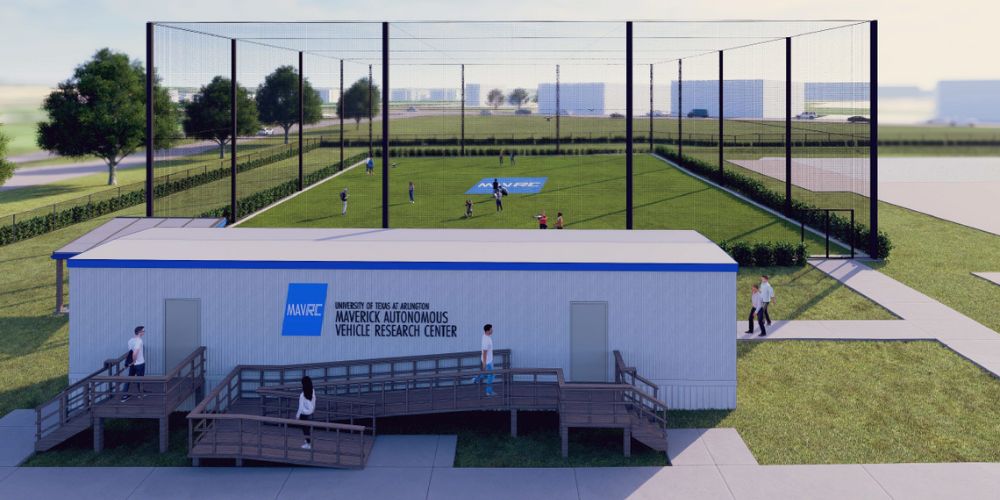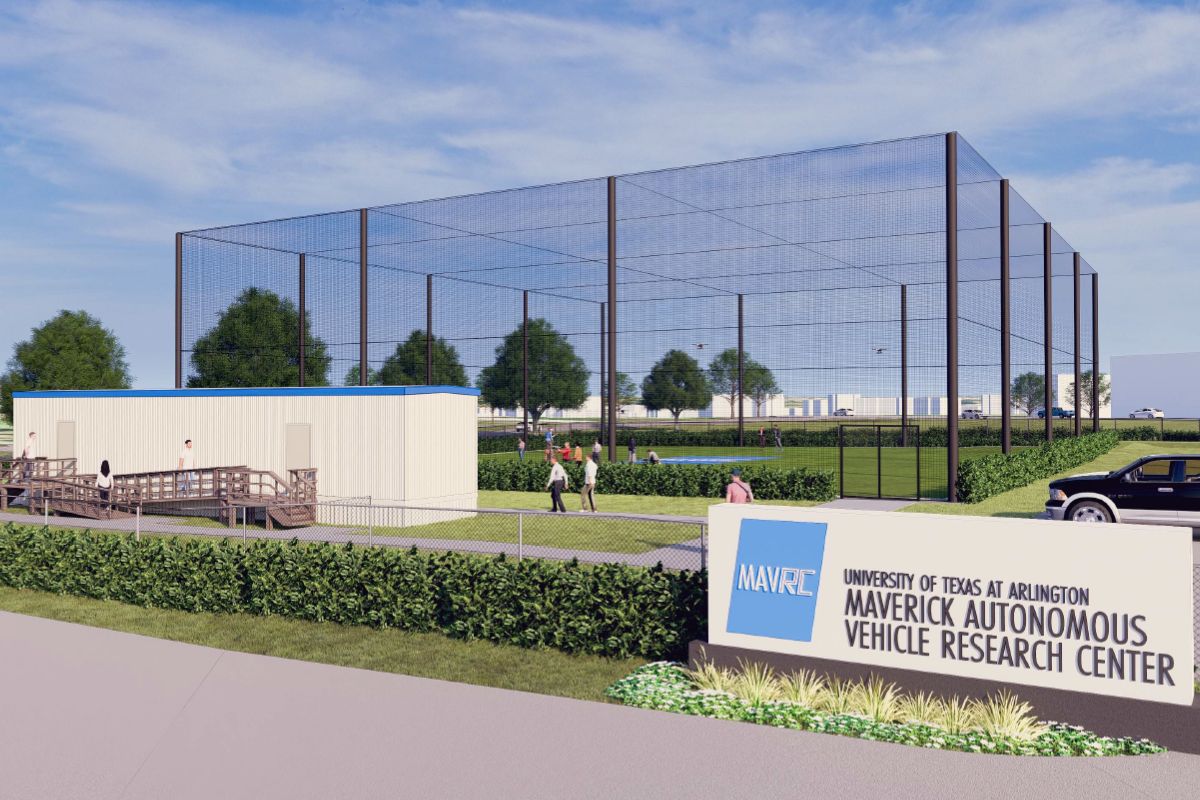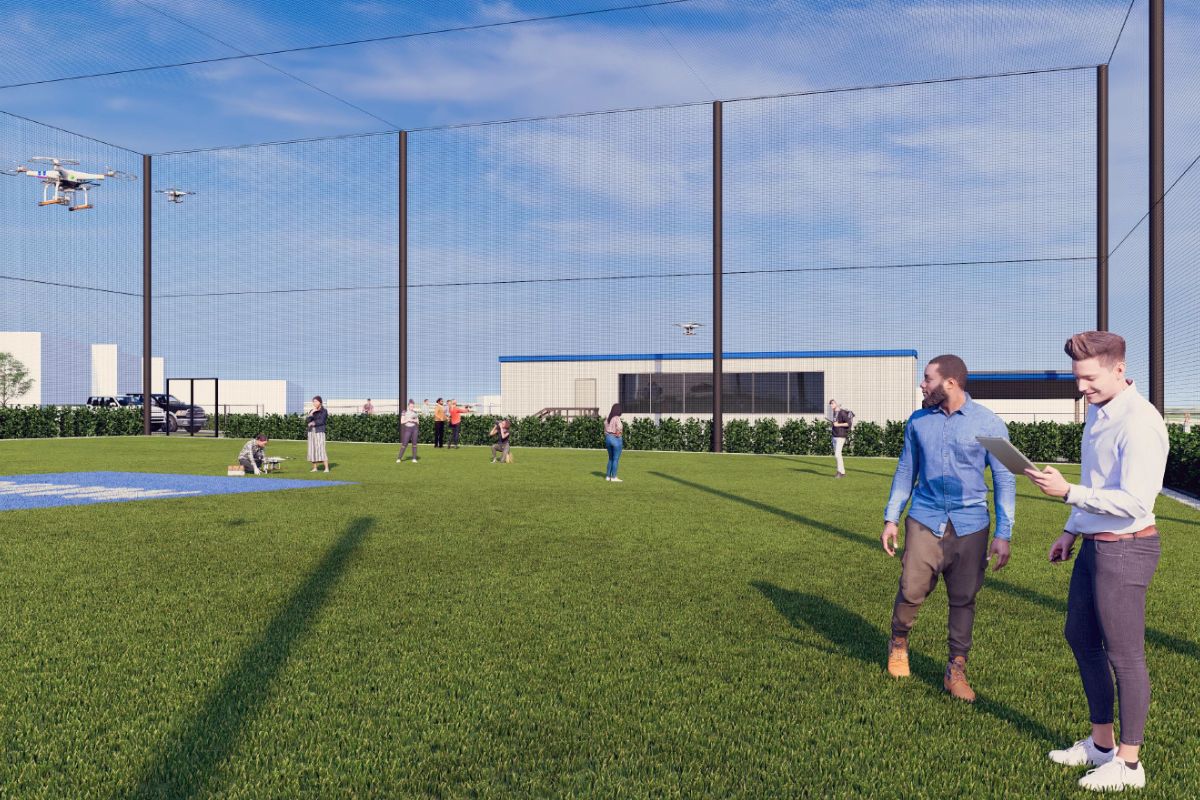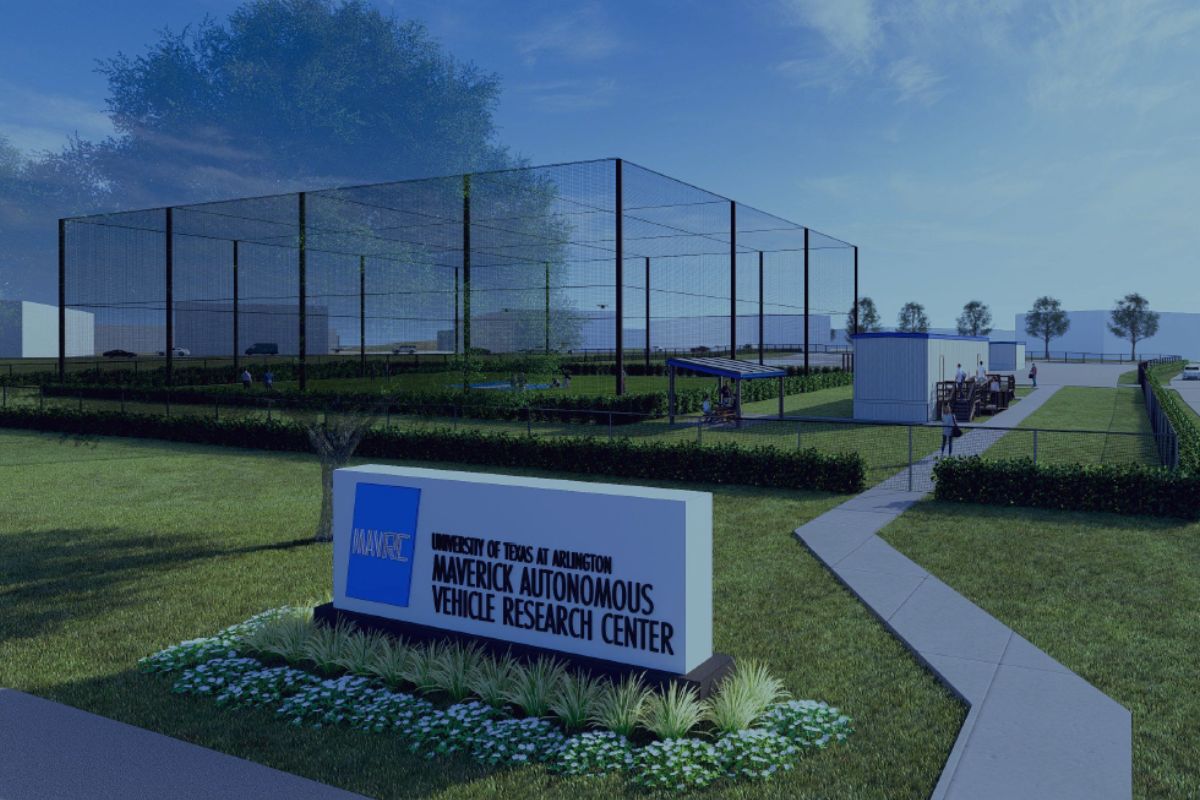UTA to build netted drone facility in Fort Worth

The University of Texas at Arlington is expanding its research and innovation capabilities by building a $2.3 million, state-of-the-art outdoor netted drone facility. The Maverick Autonomous Vehicle Research Center (MAVRC) will be located at the UT Arlington Research Institute (UTARI) in Fort Worth, with a planned completion date of January 2025.
“MAVRC will significantly and positively impact UTA’s presence in the region by supporting the university-industry-government-community ecosystem focused on autonomous and intelligent urban mobility systems that can be used in everything from self-driving cars and home package delivery to military and emergency response tools,” said Kate C. Miller, vice president for research and innovation at UTA. “A facility like this is necessary as more and more organizations move toward using autonomous vehicles. Just this week, UTA and the city of Arlington are demonstrating air robot deliveries in east Arlington as part of an ongoing project with the U.S. Department of Energy.”

The planned facility will be a netted structure equipped with lighting, an advanced suite of cameras and other sensors, and an adjacent control/education building. MAVRC aims to enhance research opportunities for faculty and students across UTA, area companies, local municipalities, and the community and allow for teaching, training, and outreach activities. These facilities are important for research as they allow for testing in all weather conditions, which is necessary for Federal Aviation Administration compliance.
“UTARI already has a smaller indoor drone facility. This new facility will greatly improve our research capabilities,” said Eileen D. Clements, interim executive director of UTARI. “This is a perfect addition to UTARI, where we specialize in applying cutting-edge technologies to real-world engineering problems. We are excited for all the new opportunities this facility will enable for UTA faculty, researchers, and students, as well as our business partners in the North Texas community.”
MAVRC will build on the existing research capabilities of UTARI’s Autonomous Systems Laboratory (ASL), led by Frank Lewis, professor of electrical engineering, and Nicholas Gans, head of UTARI’s Automation and Intelligent Systems Division. ASL currently focuses on research in controls design for autonomous vehicles. The lab also works on cooperative control of networked teams, sensor networks, and real-time control implementation.
This new resource also will complement and expand existing autonomous vehicle research at UT Arlington. Yan Wan, professor of electrical engineering who spearheaded the MAVRC project, is currently working on an airborne computing platform to enable unmanned aerial vehicles to help first responders better coordinate their efforts during emergencies. She also works on urban aerial mobility research, which has commercial applications, with many retailers studying how to use drones to deliver goods and services.

“Unmanned vehicles have phenomenal capabilities, but we must also consider how these ‘robots in the air’ talk to each other to avoid collisions and perform collaborative tasks,” said Dr. Wan. “The new facility at UTARI will allow myself, other researchers, and UTA students, plus local companies and stakeholders, to safely test and experiment with unmanned vehicles as our society speeds up its use of these technical marvels.”
“This outdoor test facility for air and ground autonomous vehicles is crucial for advancing and preparing the next generation of unmanned systems,” added Hongtei Eric Tseng, a renowned expert in vehicle autonomy and member of the National Academy of Engineering who joined UT Arlington in May as part of the Recruiting Innovative Scholars for Excellence (RISE 100) initiative. “I’m excited to have another UTA facility where we can work with students, faculty, and industry to develop cutting-edge technologies and applications. It will enhance our ability to innovate and lead cross-institutional research."
The netted facility is yet another investment in the North Texas region by UTA. In August, the University announced plans to build UTA West, a new campus in western Fort Worth dedicated to fostering economic development and meeting the educational needs of one of the fastest-growing areas in the country. UTA West is projected to enroll students as early as fall 2028 and will be developed as part of a multiyear plan to serve more than 10,000 students.